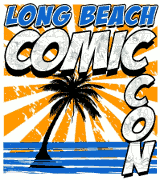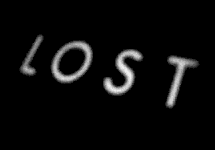The Heroes season finale was excellent. They did a good job of resolving the main story arc established at the beginning of the season (the bomb threatening New York City), balanced action and characterization, answered some questions while still leaving things open—and set up a really interesting situation for season 2.
It’s also nice to see that they’re keeping the weekly online comics going between seasons—and that they mentioned it during the broadcast. I think that’s a good move for keeping fan interest going until fall. I’m still hoping they’ll collect them in print, though. They could probably put everything concurrent with season 1 into a ~200-page trade paperback and sell it in bookstores. It would be a great companion item to go with the DVD set.
Now for more detailed thoughts on the episode. Spoilers follow:
.
.
.
Yes, spoilers!
I liked seeing the trigger finally pulled on several things that had been hinted at over the season. Niki’s super-strength being innate, for instance, though this raises an interesting question: does she have two unrelated powers (a first in this series for anyone who doesn’t absorb other people’s abilities), or is Jessica simply possessing her supernaturally? Either way, props to her laying the smackdown on Candice.
Also, Hiro is almost certainly Takezo Kensei. That should be fun. And we have a confirmed link between Linderman, the older Petrellis, Deveaux and Nakamura. I wonder whether the latter two kept in touch when they broke away from Linderman & co.?
It was good to see the direct line from “Save the Cheerleader” to “Save the World”: convince Nathan, someone integral to the plot, that it wasn’t such a good idea after all. But I was hoping it would be something Claire would do herself, not something she’d inspire someone else to do.
Now, onto the characters left with potentially fatal injuries:
D.L.: I honestly thought he was toast after Linderman shot him last week. That brain-grab really had the, um, feel of a last act of revenge/defiance (arguably self-defense, since he was protecting Niki). But after he made it through this entire episode, he’s likely to pull through. (And this week’s comic more-or-less confirms it.) He certainly has a better chance than…
Parkman: The jury’s out. They were loading him into the ambulance on a stretcher, not in a body bag, so he was clearly alive at that moment, but he took more bullets than D.L. did, and he went down and stayed down. This is going to come down to which outcome they think will make a better story.
Sylar: He’ll be fine. There’s no reason to show him having crawled off if they’re not going to bring him back. Katie pointed out that he’ll almost certainly run into Claude while he’s in hiding.
Peter: Again, he’ll be fine. We’ve established that he can survive exploding, and that he can survive falling from a great height. And he’s one of the key viewpoint characters (along with Mohinder, Hiro, and Claire). But that’s not to say he’ll show up immediately.
Nathan: It’s not clear how fast he can fly, but if he took Peter high enough and let go, he could easily have gotten himself clear of the explosion. Though if he’s missing, that’ll have some interesting effects on New York’s political situation. New York may be less inclined to look for voting irregularities if they think they need to find another Congressman anyway.
Timeline Confusion:
What we saw in “Five Years Gone” was the future after future-Hiro gave Peter the “save the cheerleader” message, but before present-Hiro and Ando saw what the future held in store. Logically, something they did changed the way the confrontation ultimately went down. The only thing that’s clear, though, is how Hiro saved Ando.
Obviously, in the previous timeline, Niki, Mohinder and Bennet were not present at ground zero. Otherwise, they would have seen that it was Peter, not Sylar, and then been incinerated. Also, something about the time Claire spent with Nathan and Mama Petrelli must have been different, or else the “save the cheerleader” clause would have kicked in and Nathan would have shown up. What I can’t figure out is how Hiro’s and Ando’s actions could have altered those factors, since the only person involved with whom they interacted was Sylar. Maybe they changed the location and time of the showdown?
So, what’s next? They saved 6 million people, but there was still a large explosion above New York, which is going to make a bunch of people really nervous (to say the least). And with all the emergency vehicles at Kirby Center, there’s a good change the truth will come out about people with powers. It would be interesting to see Agent Hanson coming back into play, with hard evidence of the fact. And I can see Linderman’s associates trying to salvage what they can from the situation.



What about that sequence of images in Sylar’s eyes, as he was lying injured on the ground? Earlier, it was established that the images in his eyes reflect his visions of the future. It would be interesting to frame-by-frame through it, and see if it represents an alternative to the future we HAVE seen, or even more of the set-up for next season.
Jim: I’d love to do that. Unfortunately, if the screencap repositories haven’t done it already, we’re probably going to have to wait until 8/28 to get anything clear, because the nbc.com stream is pretty sucky for detail.
I’m suddenly remembering those times we frame-advanced through the dream sequences in Twin Peaks and Babylon 5, trying to figure out exactly what was going on and what the clues were.
Hey, we’ve got to find something to do after Veronica Mars.
On another note, consensus elsewhere appears to be that the lone samurai was in fact Kensei, which messes with my Hiro=Kensei theory, but there’s speculation that Kensei might actually be Hiro’s father, which is almost as good. I couldn’t tell whether that was George Takei under all that. Maybe he has time-based powers as well, or ages very slowly, or maybe Hiro is going to be the one who brings him forward to the 20th century? (Hey, compared to some of the time travel family trees in The Flash, this is simple!)
It was definitely George Takei. *g*
In case anyone’s following along, we frame-advanced through that sequence. It’s the faces of Sylar’s victims over the course of the series, among them Charlie, Ted, and Peter (with just the start of a line of blood across his forehead). At the end it settles on Sylar himself, lying on the ground at Kirby Plaza.
Perhaps Kensei looks like Hiro’s father simply because Kensei is an ancestor?
Doesn’t the Haitian also have two powers?
1. Suppress other people’s powers.
2. Erase memories.
He could, of course, have absorbed those powers in the same way Peter does. We know from Claude that Peter’s not unique.
The Haitian’s abilities can be explained by a single power, like Hiro’s apparently separate abilities to stop time and teleport are both aspects of bending time and space. He interferes with brain activity.
We know from Sylar’s M.O. and from the fact that Claire’s healing ability doesn’t work if something prevents the brain from repairing itself that powers are seated in the brain. So the Haitian can introduce static, preventing a power from operating, or he can go in surgically and remove memories.
Good point. I suppose he also made Parkman pass out that one time. Same deal.
That makes sense. I seem to remember him being drugged, but that could just have been Parkman’s assumption. Katie, you’ve seen the episode more recently than I have…
He was drugged. Bennet says so. Must’ve done a number on the bartender or had a plant or something, because I have no other idea how it might have been accomplished.
Re: the timeline
Before Hiro showed up, Sylar was freaking out about potentially exploding and killing millions of people without benefitting from it. His mother’s reaction to his powers surely influenced him toward embracing the idea (he was, after all, painting the explosion in her blood while mumbling “yes, mother, I’ll be special”), but it seems the confrontation with Hiro hardened his resolve. This didn’t just set the time and place of the showdown with Peter–it altered Sylar’s attitude and behavior from that moment forward.